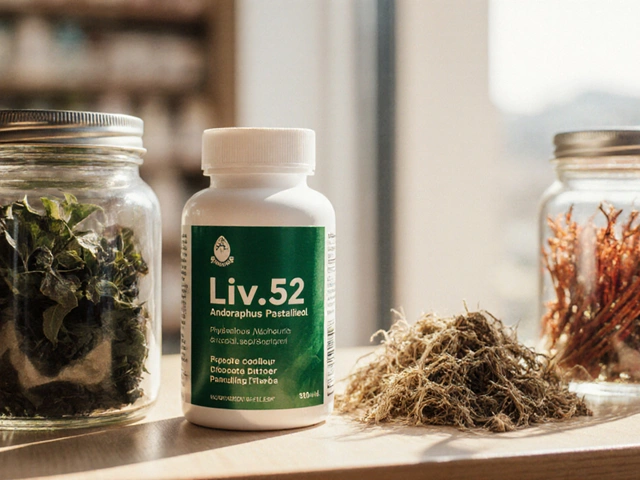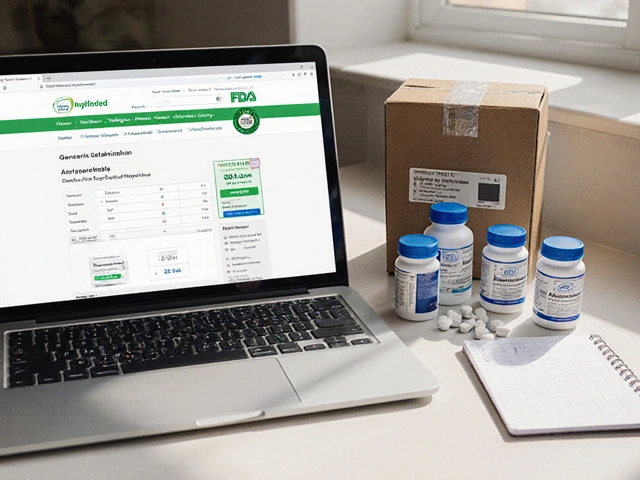April 2025 Health Savings Archive
Welcome to the April 2025 roundup. We’ve gathered four practical guides that can help you cut costs, choose smarter supplements, and find alternatives when a drug doesn’t fit. Grab a coffee, skim the highlights, and pick the tips that match your needs.
How to Slash ED Medication Costs
If you’ve glanced at the price tag on Cialis and felt a sting, you’re not alone. Our guide walks you through three insurance tricks that actually work. First, ask your doctor for a prior‑authorization waiver – many plans will approve a cheaper generic if you explain the cost issue. Second, file a tier‑exception request; this tells the insurer that the brand‑name drug is medically necessary, often unlocking a lower co‑pay. Third, switch to a mail‑order pharmacy – they usually offer a 30‑day supply for a fraction of the retail price. Combine these steps and you could see a 40‑50% drop in out‑of‑pocket expense.
Graviola – The Trending Natural Supplement
Graviola, also called soursop, is popping up in teas, capsules, and smoothies. It’s packed with antioxidants that protect cells from damage, and early research hints it might help calm inflammation. If you decide to try it, start with a low dose – a half‑tablet or a single teaspoon of tea – to see how your body reacts. Pair it with a balanced diet and you’ll avoid relying on any single supplement for a miracle cure. Most importantly, talk to your pharmacist before mixing Graviola with prescription meds, especially blood thinners.
Beyond the hype, we also compare four other popular supplements that claim similar benefits. Vitamin C, turmeric, green tea extract, and omega‑3 oils all have solid research backing and are typically easier on the wallet. Pick one that matches your health goals, stick to the recommended dose, and track any changes you notice.
Alternatives to Neurontin for Nerve Pain
Neurontin (gabapentin) works for many, but side effects can be frustrating. Our list of seven alternatives gives you options that might suit you better. Topical lidocaine patches provide localized relief without a systemic dose. For oral meds, consider pregabalin, which is chemically similar but often tolerated better. Baclofen and tizanidine serve as muscle relaxers that can ease nerve‑related tightness. If you prefer non‑drug approaches, try low‑frequency TENS units or guided yoga – they’ve helped many reduce pain scores.
Each alternative comes with its own pros and cons. For example, pregabalin may cause dizziness, while lidocaine patches rarely cause systemic effects but only work on small areas. Talk to your doctor about switching, and ask if a short trial period is possible to gauge effectiveness.
Muscle‑Relaxer Options in 2025
Cyclobenzaprine has long been a go‑to for muscle spasms, but newer options are worth checking out. Methocarbamol is a leading alternative; it’s less sedating and works well for short‑term flares. If you need something even milder, try tizanidine – just watch for low blood pressure. For severe cases, a short course of baclofen might be prescribed, though it can cause dependence if used too long.
When choosing a muscle relaxer, look at how quickly it kicks in, how long it lasts, and what side effects it brings. Many people report that taking the drug with a light snack reduces stomach upset. Keep a symptom diary – note the time you take the pill, pain level, and any drowsiness – to help your doctor fine‑tune the prescription.
That’s the April 2025 snapshot. Whether you’re hunting for insurance hacks, exploring natural supplements, or swapping out a prescription, the right info can save money and improve health. Come back each month for fresh, budget‑friendly health tips.

When to Switch From Valtrex to Acyclovir: Practical Insights on Resistance and Dosing
Sometimes, sticking to a herpes medication that once worked just isn't cutting it anymore. This article dives into when and why a switch from Valtrex to acyclovir makes sense. You'll learn about real-life clinical triggers behind switching, what resistance means, and why dosing schedules matter to real people. Plus, get expert wisdom on navigating alternative treatments when the usual meds fail. This read breaks down complicated science into plain advice you can use—straight talk, not medical mumbo jumbo.

Insurance Tricks to Cut ED Med Costs Without Brand-Name Cialis
Looking to save big on erectile dysfunction medication without splurging on brand-name Cialis? This article breaks down insider strategies like navigating prior authorizations, filing tier exceptions, and getting the most out of mail-order pharmacies. Expect plenty of tips, practical examples, and details about insurance loopholes to help you lower your prescription costs. A handy resource for anyone frustrated with the price tag of ED meds. Real facts, no fluff.

Graviola: The Natural Dietary Supplement That's Taking the Health World by Storm
Graviola, also known as soursop, is gaining serious popularity as a natural dietary supplement packed with antioxidants and potential wellness benefits. This tropical fruit is showing up in everything from teas to capsules, catching the attention of anyone interested in boosting immune health naturally. People are talking about its possible roles in fighting inflammation and even supporting healthy energy levels. But what's actually behind all the hype? Let’s break down what makes graviola the new star in the world of supplements and how you might use it safely.

7 Alternatives to Neurontin: Options That Could Make a Real Difference
Looking for alternatives to Neurontin? This guide explores other treatments you can try for nerve pain, from topical patches to oral options. Each one has its own set of benefits and drawbacks, so you'll get a clear idea of what might suit your needs. Easy-to-read pros and cons highlight what to expect. Make a more informed choice about managing your pain.




